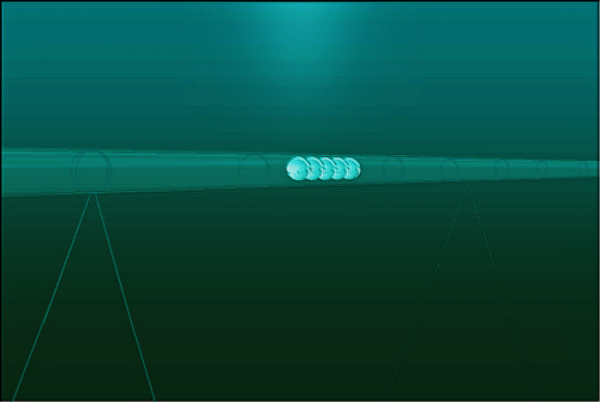BY LETTER
Vac Trains
Technology > Technology Type or Material > Drytech/Hylotech
Technology > Application > Everydaytech
Technology > Application > Infrastructure
Technology > Technology Levels > Middle Tech / Midtech
Technology > Application > Transportation > Subsurface Transport
Technology > Application > Transportation > Surface Transport
Technology > Application > Everydaytech
Technology > Application > Infrastructure
Technology > Technology Levels > Middle Tech / Midtech
Technology > Application > Transportation > Subsurface Transport
Technology > Application > Transportation > Surface Transport
 Image from Steve Bowers | |
| Beneath the surface of the Graham Sea on Pacifica runs the Liberty-Florida Island vac-tube; the diamondoid tube is supported by its own buoyancy and is anchored to the ocean floor safely below the shipping lanes | |
Magnetic levitation based transportation system used to provide rapid mass transit across a wide range of habitats from planetary surfaces to megastructural constructs.
Vac Trains are built upon basic concepts predating the Information Age although they are often associated with such Information Age thinkers as Gerard K. O'Neill and Paul Birch. They make use of magnetically levitated cars operating in an evacuated chamber to provide transportation systems capable of approaching or sometimes even exceeding orbital or interplanetary transit velocities.
Transit tubes may be built on, above, or below the surface of a planet or habitat, suspended under water at a depth below that used by shipping or affected by storms, or attached to the outer hulls of space habitats and megastructures. On tectonically active worlds, the transit tube is often suspended inside a larger bracing tube filled with shock absorbing smart matter. Some worlds even have free-fall vac trains, where the train is accelerated into an orbit within the planet itself, following an elliptical path for part of the journey. Passengers briefly experience microgravity conditions during such transits.
A short range vac train system, such as might be used to provide transportation between nearby communities on a planetary surface, will usually accelerate its cars at a steady but fairly gradual rate until they reach some predetermined velocity designed to provide a reasonable transit time to the destination (generally no more than a thousand kilometers per hour), then let the cars coast until they near the destination, whereupon they are gradually decelerated to a stop.
For longer range travel, either on a planetary surface or space habitat, the transit cars are often accelerated gradually but continuously (half a standard gravity is a common acceleration) for half of the journey and then decelerated for the other half. Such a system can cross significant planetary or habitat distances in a matter of minutes and even Banks Orbital scale constructions can be circumnavigated in less than 48 hours. Such high speed transit systems must be built to minimize tube curvature due to the velocities involved and may appear almost mathematically straight when observed from close range.
Note that passengers must be accommodated safely when accelerating in this fashion. Some trains have rotating sections to maintain vertical orientation for travelers during the acceleration and deceleration phases while others employ dedicated utility fog or plasm based seating which conforms to the passenger and maintains the desired orientation.
At the largest scales, mass stream technology may be used to provide motive power to the transit cars, which magnetically couple to a network of mass beams, specialized for the purpose. Such systems are employed in the Kiyoshi complex and similar structures and permit travel to any point on a given dyson component in less than a standard day. For transit between components, travel times are generally measured in days or weeks but the distances covered are several orders of magnitude larger and the high efficiency and energy conservative nature of the transport web makes it the preferred method of travel for anything other than emergency transit conditions.
Related Articles
Appears in Topics
| Drytech/Hylotech | Everydaytech | Infrastructure |
| Middle Tech / Midtech | Subsurface Transport | Surface Transport |
Development Notes
Text by Todd Drashner
Initially published on 31 October 2006.
Initially published on 31 October 2006.






